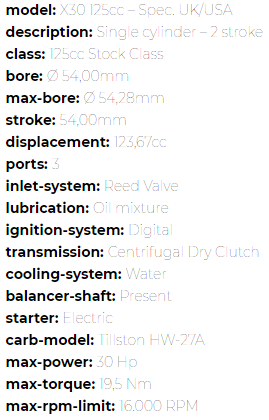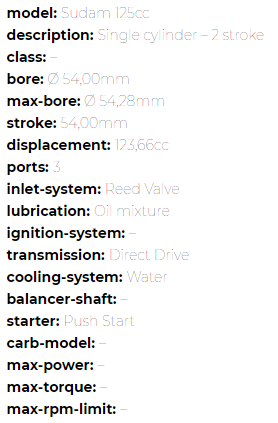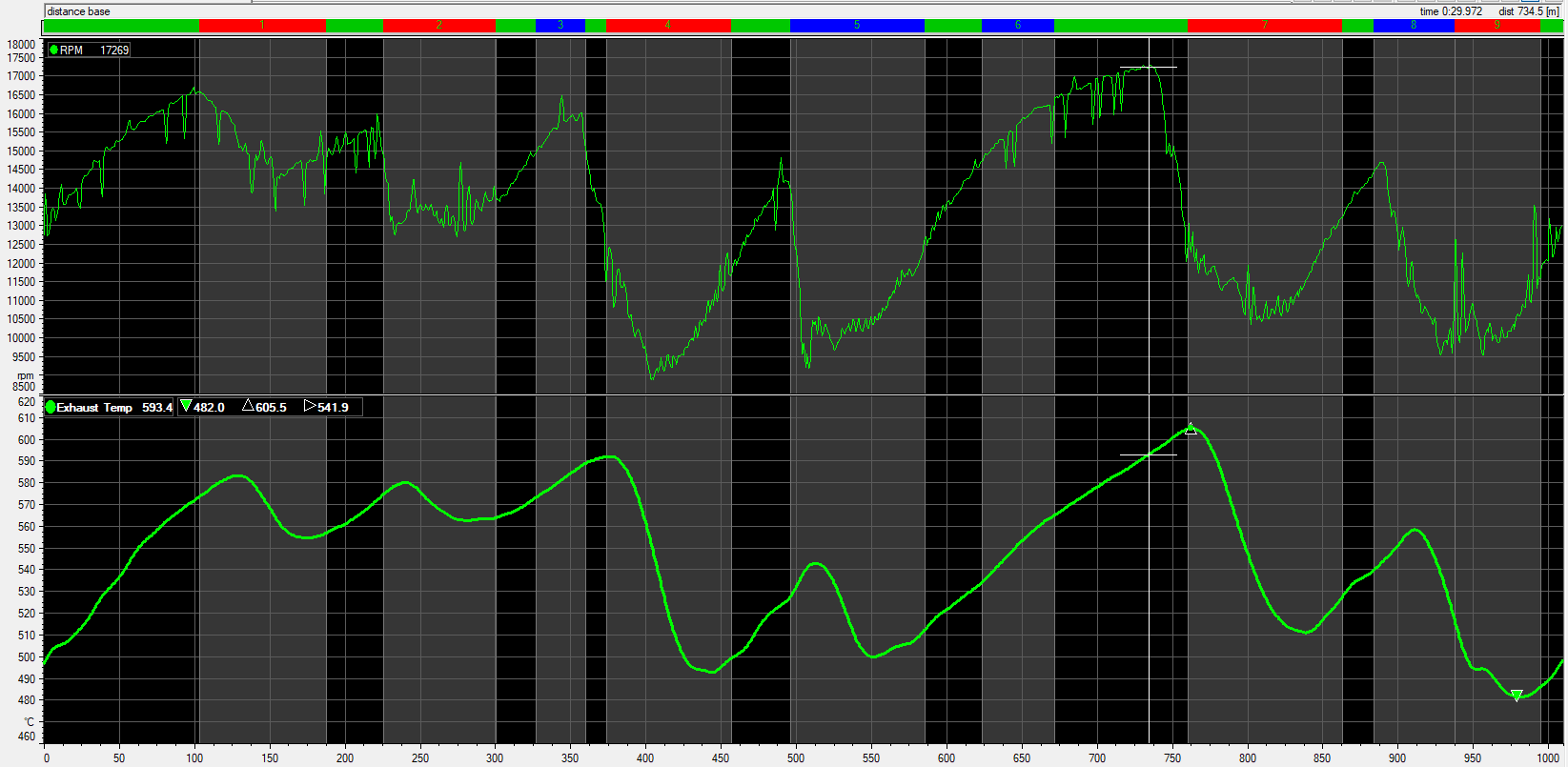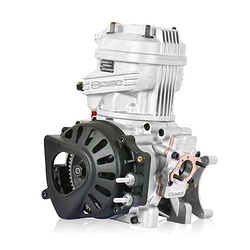I’ve seen that with aircooled, but with watercooled I’ve found that “too lean” means a drop in performance without detonation… depending on how lean you go.
This is an interesting one… How is the actual relative performance been in that time? The “optimal” EGT can vary with all kinds of this fuel, squish, compression etc.
How about the ignition timing… when the top end was done, was the ignition timing verified?
EGT thermocouples are also notoriously fickle as well - something to keep in mind when you can’t figure things out.
You can stick it in boiling water for a quick check (100ºC/212ºF) if you’re around sea level.
A low EGT can also mean unburnt fuel/oil; but it would need to be quite bad for that to happen; though an intermittent misfire can lead to that.
There’s some good back-and-forth on the merits and pitfalls of EGT tuning/monitoring here: ROK Shifter EGT's
@alvinnunley thanks again for the helpful reply. Will do all that and further testing as soon as we’re allowed to go to track!
@KartingIsLife I didn’t notice any major drop in performance since when the engine was new, even before and after the top end rebuild the performance didn’t change noticeably. With regards to ignition timing, it was not verified but no changes were made to affect it.
This is what I aim as well and it is working for me up to now.
AllLoss of performance without detonation? What evidence do you have that there was no detonation even though you had a loss in performance?
I am creating my own database with information about my best laps of last 80 sessions I had (including training, qualifies and races) and the average EGT temps are:
- Average of minimun EGT temp at best laps: 472ºC (882ºF)
- Average of maximun EGT temp at best laps: 598ºC (1108ºF)
I’d like to know your toughts about these averages and also about the gap between than, I mean, the difference (126ºC / 259ºF) between min and max seems to be ok?
Rotax Max is a good example. If you go a jet size or so too small for the conditions they lose power and backfire. Usually referred to as a lean pop.
If you could chart that, overlaid with RPM numbers, it might be easier for me to evaluate. It’s been my experience that the EGT will very with the load on the engine. Low end/low temp, high-end/high temp.
Several have mentioned variations in EGT readings blaming the sensor. My question is, does the EGT probe need to be cleaned and if so with what (chemicals / abrasives)? Also, there is some small adjustment in depth of the sensor, what is the ideal depth or does that mater?
@alvinnunley, I got a screenshot from Race Studio with 2 graphs of my fastest lap in the track I am used to train/race. First graph showing RPM and second graph showing EGT.
As you can see, in this lap I reached the following:
Min RPM: 8,889 (EGT at that moment was 549ºC/1020ºF)
Max RPM: 17,325 (EGT at that moment was 593ºC/1100ºF)
Max EGT: 605ºC/1122ºF
Min EGT: 482ºC/900ºF
From your experience, seems to be a good relation between both graphs?
Gap between min and max EGT seems to be ok?
Thanks in advance for your inputs.
Nice graft! Never seen this one before. Thank you!
Noticed the lag in highs and lows between the RPMs and the temps. Other than the lag, I see a direct correlation between RPM lows and temp lows. Tends to corroborate what I said about needing to be rich on the low-speed to prevent detonation. I think, I could be wrong. The spread, on the temps scale, is narrower than I expected. It’s quite a bit wider on a KT100. Can this be attributed to your tuning skills?
I wonder, if you went a little richer on the low-speed, could you flatten those highs and lows a little bit? Something to shoot for.
I’m a little surprised at the jagged line of the RPM scale. What do you attribute this to? Is there any driver input into this?
Thanks again, I love this stuff, if it’s not already obvious. lol
@alvinnunley, maybe I forgot to say I do not use KT100, KA100 or X30. The engine I have is IAME SUDAM as shown below. It is similar to IAME X30 but without clutch and digital ignition.
IAME X30 Picture and Spec

IAME SUDAM Picture and Spec


I´ll try to answer your message by parts:
-
Lag in between RPM min/max and Temp min/max: I measured the timing difference between max RPM and max EGT and it was 1sec. It means RPM changed by increasing to decreasing curve faster than temperature by 1 sec. The lag between min RPM and min EGT was 2 sec.
It seems to be ok once temp has greater inertia to change, mainly in low RPM. -
Correlation between low RPM and low EGT: I agree, higher RPM higher temp, lower RPM, lower temp.
-
“to be rich on the low-speed to prevent detonation”: I thought denotation occurred just at high RPM when temp exceed healthy temps like 650ºC/1200ºF. Could you please elaborate better your statement?
-
“The spread on the temps scale is narrower than I expected. It´s quite a bit wider on a KT100”: maybe because the engine I use is cooled by water and KT100 is not?
-
“if you went a little richer on the low-speed, could you flatten those highs and lows a little bit”: What is the benefit of it in your opinion?
-
“I’m a little surprised at the jagged line of the RPM scale.”: I believe it can be due to some interference the spark plug causes but do not ask me why. What I know is that some spark plugs make my telemetry gauge (AIM Mychron 5) measure RPM incorrectly and sometimes it makes the gauge stop working. So, I realized there is a link between spark plug models and RPM issues.
Thanks for your message @alvinnunley. I always learn a lot from what you have to say.
I am sure @alvinnunley could expand on this more than I. Point by point:
-
The Lag is likely due to the dampening effect of water cooling and the period of the lag to do with the combustion chamber heating and cooling with different loads. Meaning under load, combustion warms the chamber, off load lack of combustion cools the chamber. Even off throttle, a small amount of fuel still enters the engine and has a cooling effect…like choking the airbox. Water is much more efficient than air at cooling. The water is pumped by a pulley on the axle (which varies with rolling speed) at low rpm/speed the flow rate slows and at high rpm/speed the flow rate increases, so at low rpm/speed it takes longer for the water to dissipate the heat.
-
same, agree.
-
Combustion happens by means of Temperature, Pressure and/or Catalyst (spark). The temperatures inside the combustion chamber at ignition are higher than those in the exhaust, because the gas undergoing expansion (has a cooling effect) and the chamber is absorbing some of the heat. At higher RPM the gasses are being pumped out of the engine at a faster rate, so the gas temps are closer to actual combustion chamber temps that at lower RPM when they are moving slower and can dissipate more heat following ignition. At low RPM gas temps are deflated compared to combustion chamber temps due to this improved dissipation of heat.
Detonation (or Pre-Detonation) can happen if the temps inside the combustion chamber at the point of ignition exceed ideal conditions (too high heat/pressure). By having a slightly richer low speed setting, you are improving the cooling effect of the fuel entering the engine. By the way, unless you are running low octane pump gas, I doubt you will have this issue on your water cooled engine. Temps will not get high enough and race fuel’s higher octane will not pre-detonate under normal conditions in comparison. -
Agree, water cooling is very efficient.
-
I think where Alvin was going is that with a slightly richer low speed setting, you can lean out the high speed setting slightly and improve the Air Fuel Ratio consistency across a wider RPM band. The low speed jet is always active and will increase fuel supply with demand. The high speed jet only comes into play with the throttle body open adding that extra needed under demand. By shifting which fuel circuit is carrying the load, you can flatten out the curve and deliver a more consistent AFR across a wider band.
-
Does the Sudam use a resistor type plug? Non-Resistor plugs can put out a lot of Radio Interference. I use a MyChron 4 on an older '09 IAME Leopard that does use the resistor style plug and found a lot of noise in the RPM channel too. I made a few extra loops with the pickup wire and it settled down. AIM recommends more loops on 4 cycle engine, because they say the spark signal is not as strong as a 2 stroke, but resistor or not more loops with the lead should strengthen the signal.
I would love to hear Alvin’s thoughts on this too.
First off, you’re a very prolific writer. Not that I don’t enjoy it, but I’m afraid my responses will not do it justice.
Theories on what’s going on in the combustion chamber are everywhere. Yours are as good as anyone’s, including me. My theories are not nearly as involved as yours. I enjoy reading them. Are they right or wrong, who knows, not me, but I do have some ideas of my own, ideas that mostly coincide with what you say. Mine are a little on the simple side.
My ideas start off with; we tune the expansion chamber to be most efficient at the engines peak torque RPM. Hence the reason for running so rich on the low-speed. Running rich is to prevent detonation. Detonation is caused by (again I keep it simple) excessive heat and/or pressure. As the RPMs increase both the pipe and the engine become less efficient, meaning less pressure, thus the higher EGT readings. There’s less pressure so you can run the EGT higher.
Detonation causes a drop in the EGT, your first clue that detonation is beginning. Always run as high an EGT as possible. That’s pretty much it.
In my theories, you need to run a lot richer on the low-speed where the engine and pipe are most efficient.
I’ve had a few X30 engines and here in Europe the EGT would be perfect at 650-660 degrees Celsius, you can reach 680 degrees without seizing the engine but in order to be safe, keep at 650-660 Celsius.
Al, what is the “effect” of richer on the low speed as a general philosophy to shoot for. What does that pursue, performance wise? Ideal acceleration off the bottom end?

